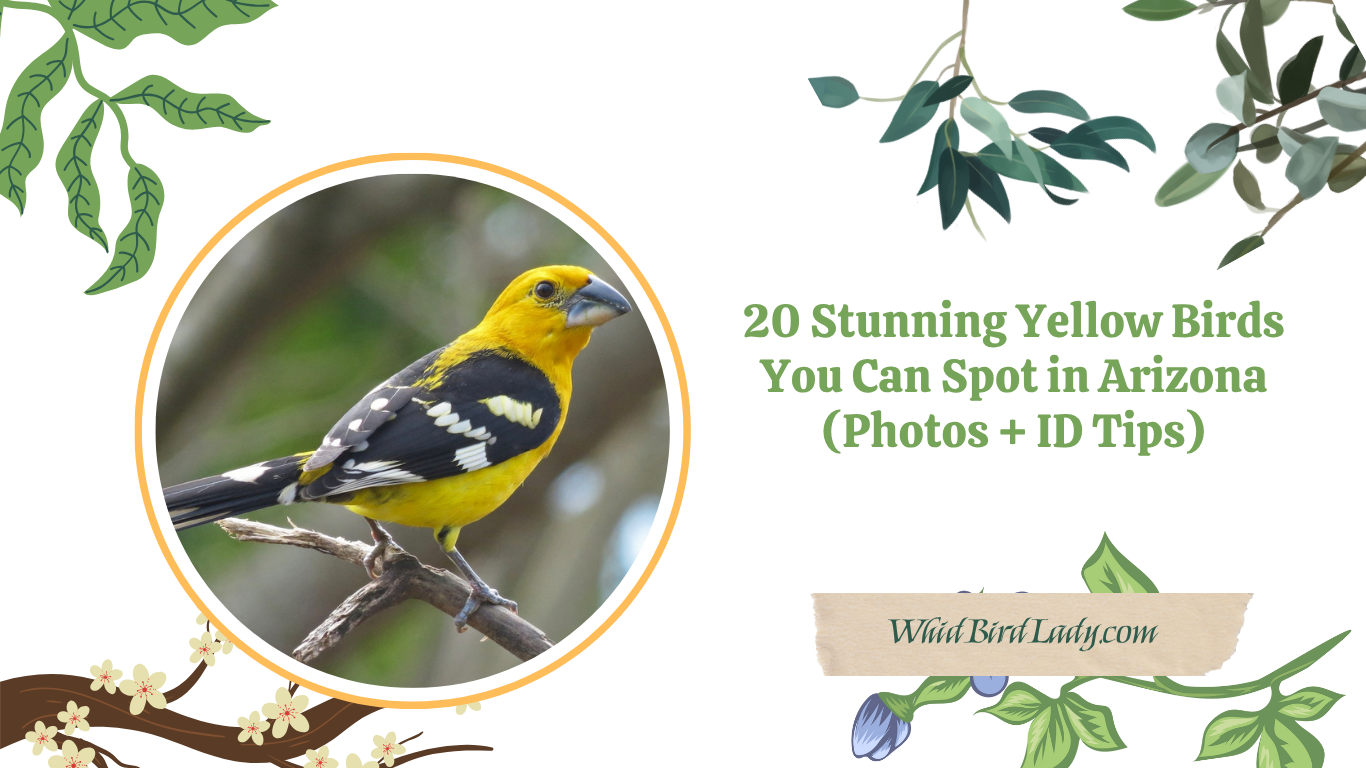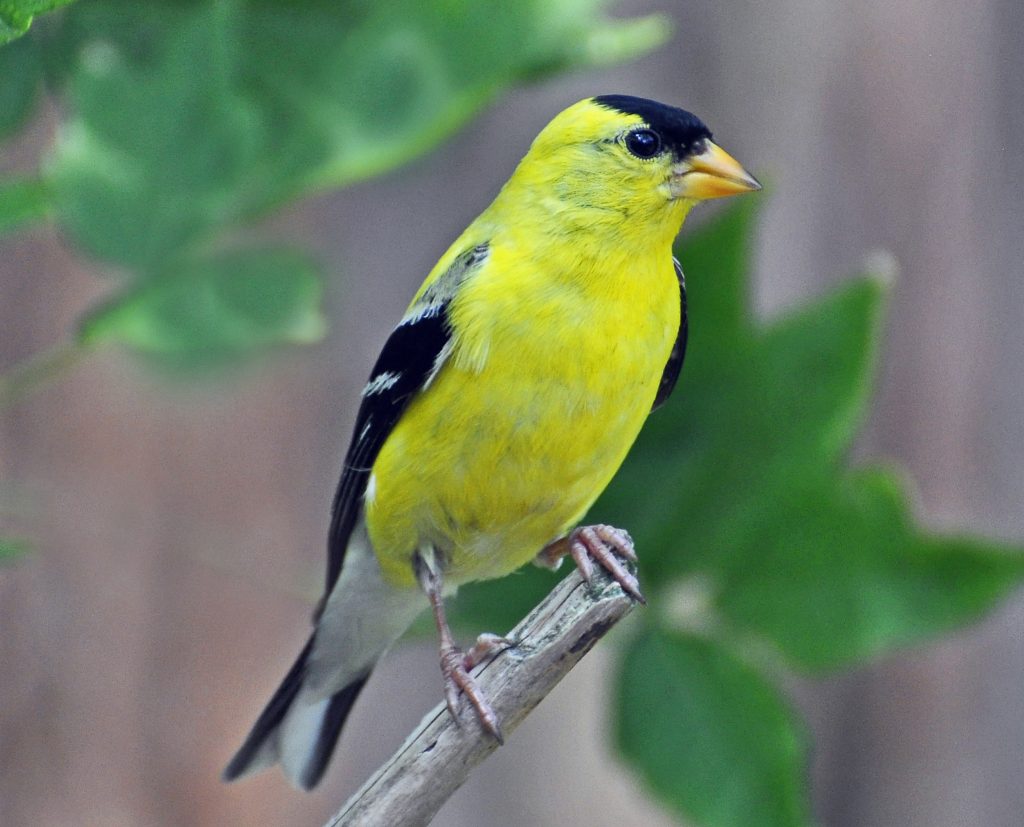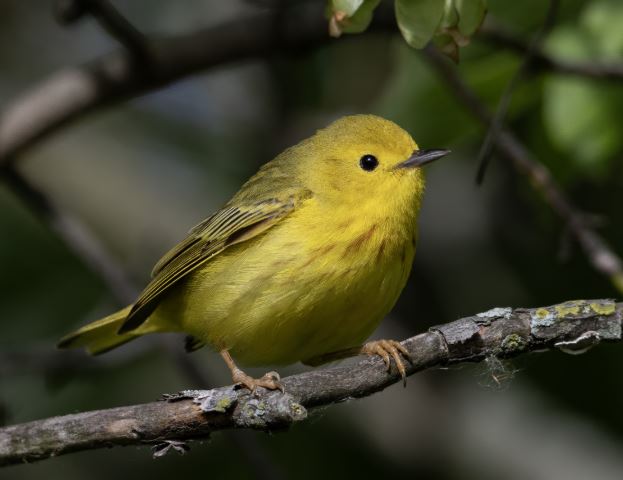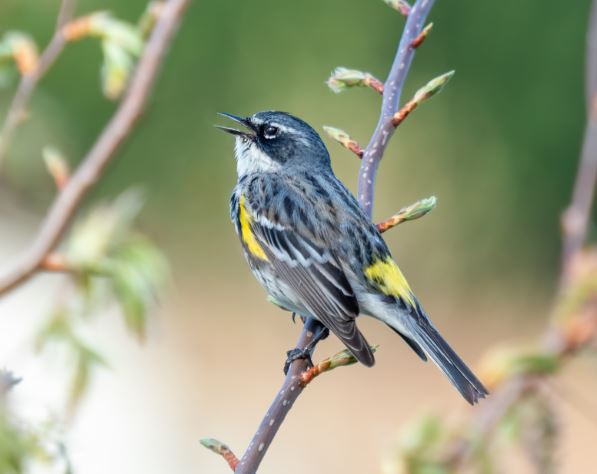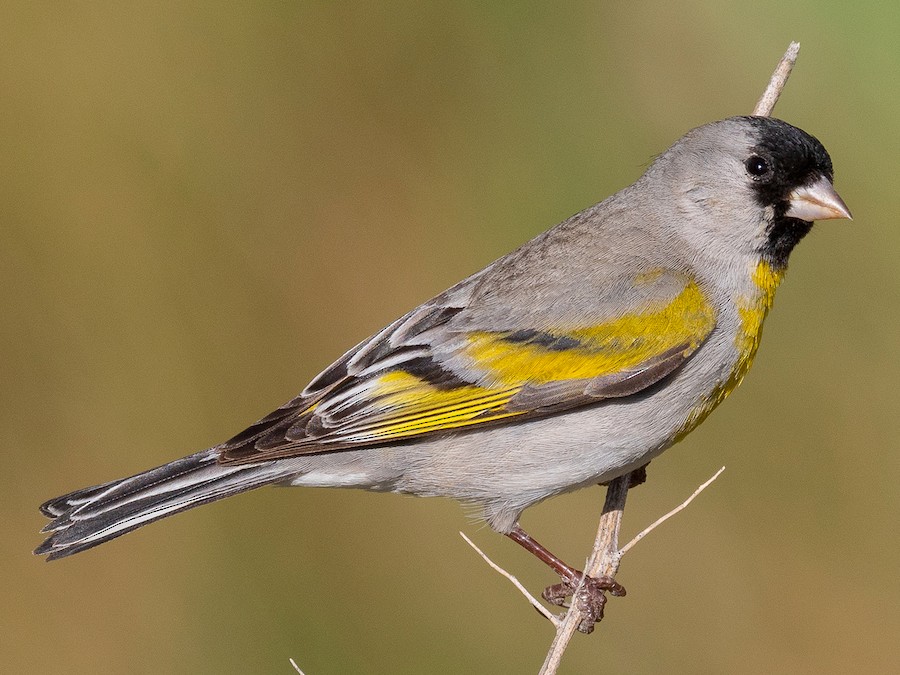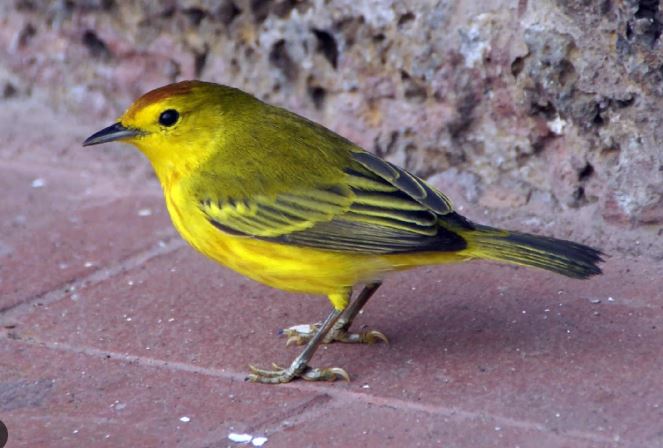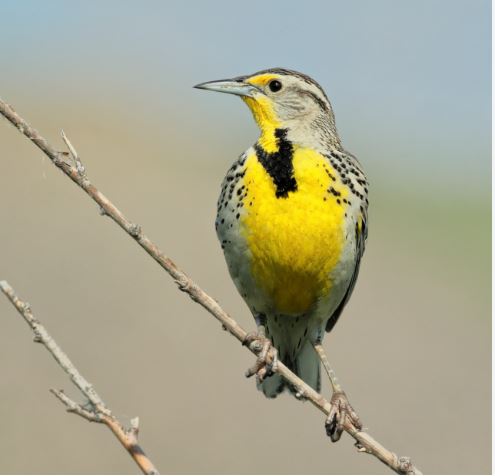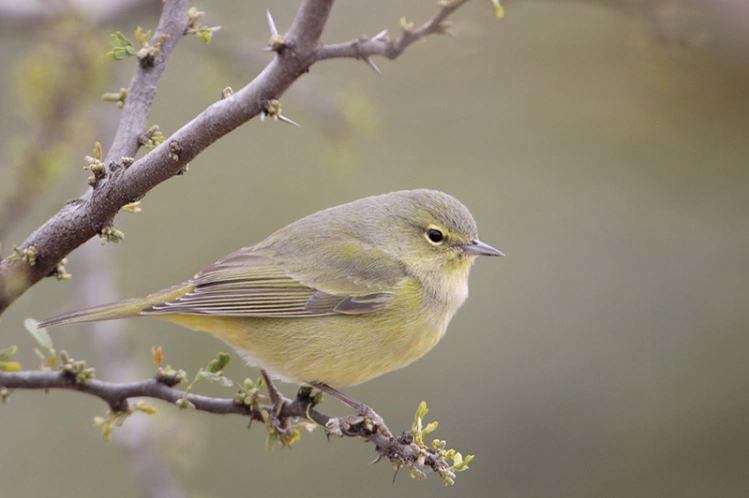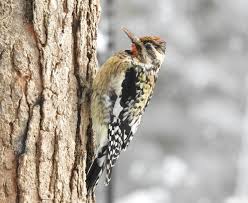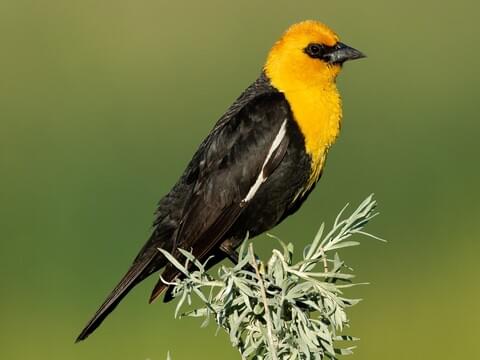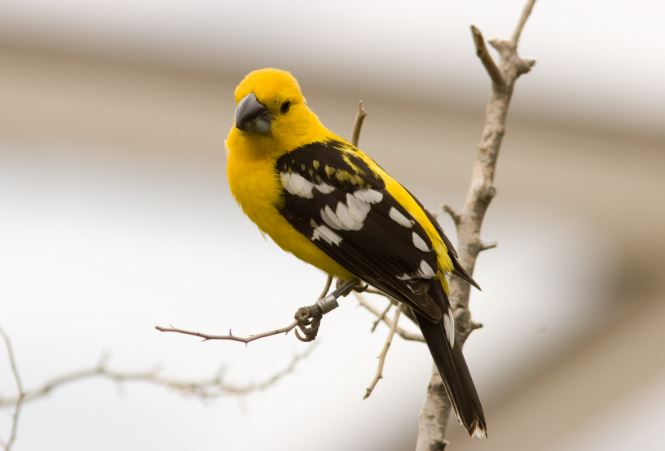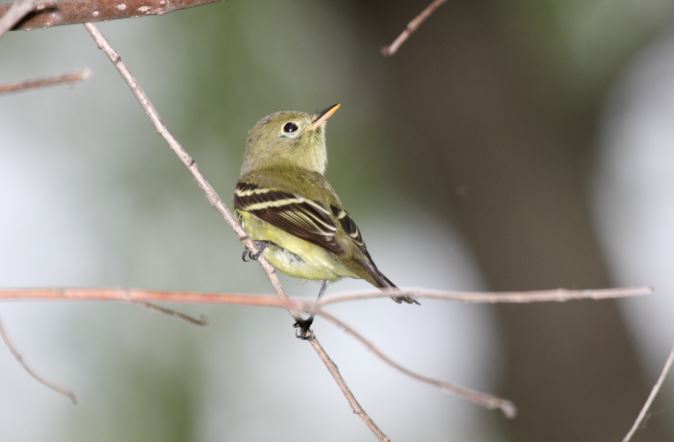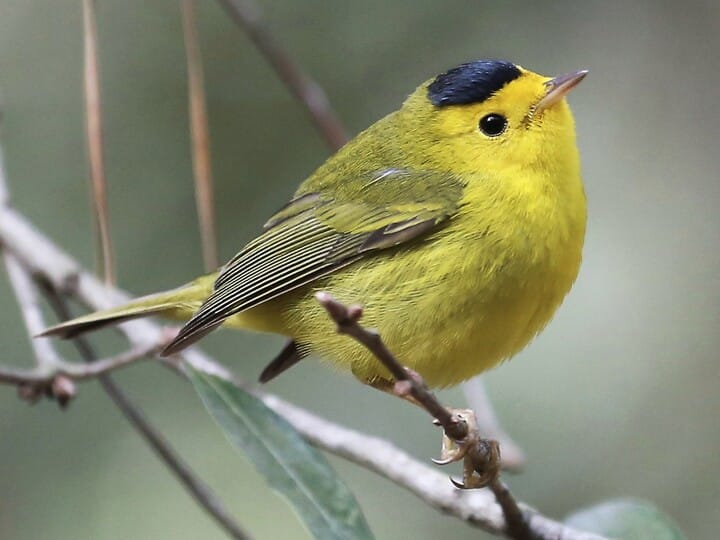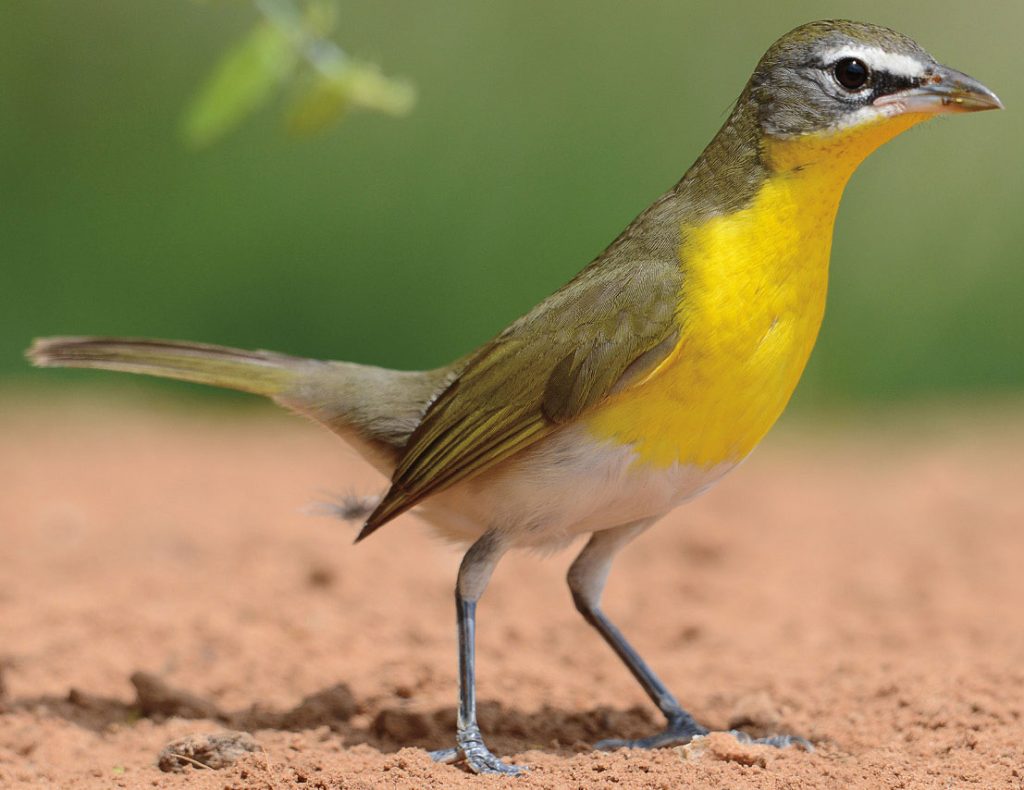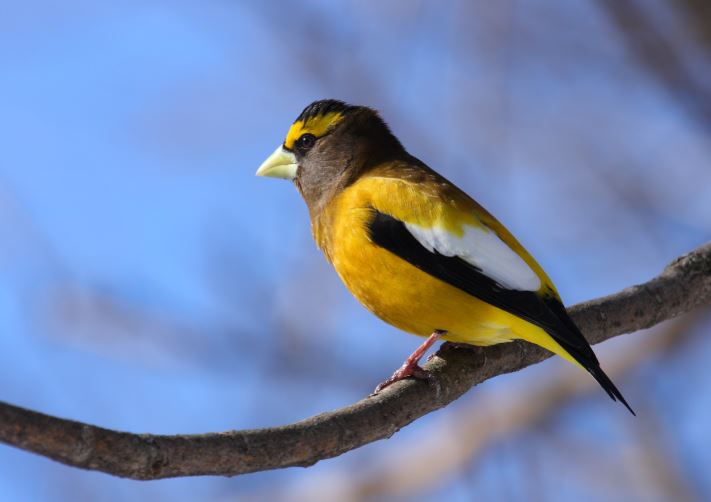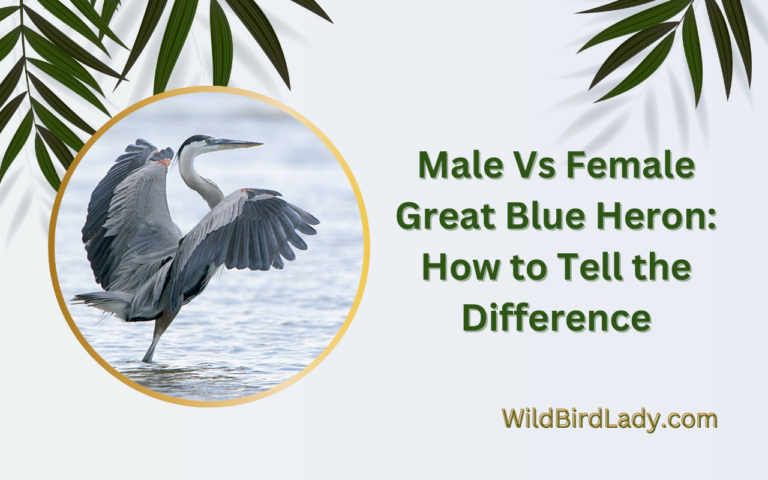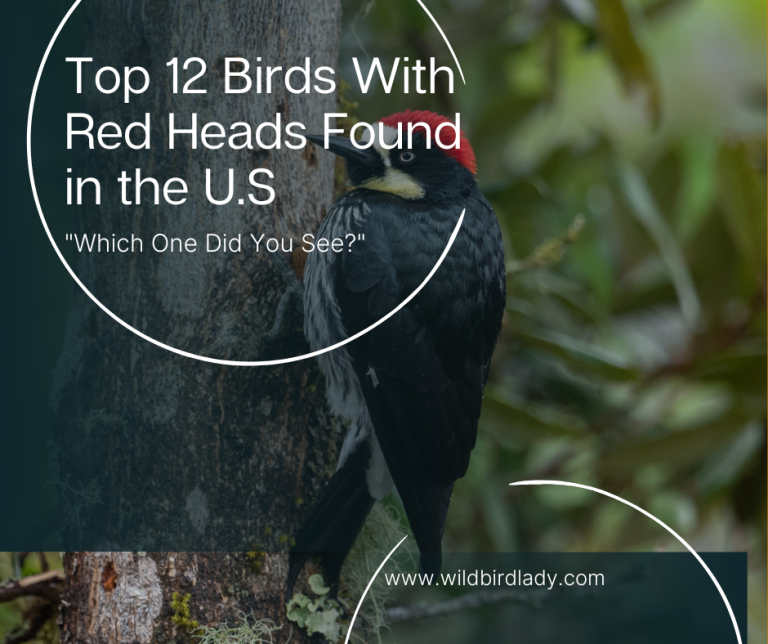20 Stunning Yellow Birds You Can Spot in Arizona (Photos + ID Tips)
Arizona’s diverse landscapes—from sun-drenched deserts to lush riparian zones—make it a haven for birdwatchers. And if you’re on the lookout for dazzling yellow birds, you’re in for a treat. The Grand Canyon State is home to a vibrant variety of yellow-feathered beauties, ranging from bold year-round residents to striking seasonal visitors.
In this guide, you’ll discover 20 stunning yellow birds in Arizona, complete with photos, ID tips, and where to find them. Whether you’re new to birdwatching or a seasoned birder, this list will help you identify these golden gems in the wild.
1. Lesser Goldfinch
Scientific Name: Spinus psaltria
Size: 10 – 11.5 cm
Weight: 8 – 11 grams
Wingspan: 19 – 22 cm
Where to Find: Suburban areas, desert edges, riparian zones
ID Tips: Males have a black cap, greenish-black back, and a vibrant yellow underside. Females and juveniles are duller with more olive coloring.
Habitat & Diet: Prefer open scrublands, backyards, and weedy fields. Primarily feed on seeds from sunflowers, dandelions, and thistles, but also eat small insects.
Breeding Season: March to August
Vocalizations: Complex and cheerful twittering calls.
Fun Fact: Lesser Goldfinches can mimic other birds’ songs, including American Robins and House Finches.
2. American Goldfinch
Scientific Name: Spinus tristis
Size: 11 – 13 cm
Weight: 11 – 20 grams
Wingspan: 19 – 22 cm
Where to Find: Gardens, meadows, and riparian areas
ID Tips: Bright yellow body with black wings and a black forehead in males during breeding season; females are duller.
Habitat & Diet: Favor thistle patches, sunflower fields, and gardens; primarily seed eaters but occasionally insects.
Breeding Season: Late spring to early summer
Vocalizations: Cheerful, twittering song often described as “po-ta-to-chip.”
Fun Fact: American Goldfinches molt twice a year, changing from bright yellow in summer to dull olive in winter.
3. Yellow Warbler
Scientific Name: Setophaga petechia
Size: 11.5 – 13 cm
Weight: 7 – 12 grams
Wingspan: 16 – 22 cm
Where to Find: Riparian woodlands, willow thickets, and near water sources
ID Tips: Bright yellow all over with subtle reddish streaks on the chest; slender body and sharp pointed bill.
Habitat & Diet: Prefer dense shrubs and trees near water; feeds mainly on insects and spiders.
Breeding Season: April to July
Vocalizations: Sweet, musical series of rapid notes.
Fun Fact: Yellow Warblers are known for aggressively defending their nests against predators, even attacking larger birds.
4. Hooded Oriole
Scientific Name: Icterus cucullatus
Size: 18 – 22 cm
Weight: 30 – 50 grams
Wingspan: 30 – 35 cm
Where to Find: Desert oases, palm trees, suburban areas
ID Tips: Males are bright orange-yellow with black face and back; females are duller yellow with grayish wings.
Habitat & Diet: Often found around palm trees and feeders; feed on nectar, fruit, and insects.
Breeding Season: May to August
Vocalizations: Warbling and buzzy calls.
Fun Fact: Hooded Orioles often build hanging pouch nests woven from plant fibers.
5. Yellow-rumped Warbler
Scientific Name: Setophaga coronata
Size: 13 – 15 cm
Weight: 11 – 14 grams
Wingspan: 22 – 25 cm
Where to Find: Pine forests, mixed woodlands, and shrubby areas
ID Tips: Yellow patch on the rump, yellow sides, with streaked gray body; males have bolder markings than females.
Habitat & Diet: Feed on insects, berries, and seeds; adaptable to a variety of habitats.
Breeding Season: May to July
Vocalizations: Sharp, buzzy “check” notes and trills.
Fun Fact: Yellow-rumped Warblers can digest waxy berries that other birds can’t, allowing them to survive winter better.
6. Yellow-headed Blackbird
Scientific Name: Xanthocephalus xanthocephalus
Size: 21 – 25 cm
Weight: 100 – 120 grams
Wingspan: 38 – 46 cm
Where to Find: Marshes, wetlands, and ponds
ID Tips: Striking bright yellow head and chest with a black body; females are duller with yellowish patches.
Habitat & Diet: Nest in cattail marshes; eat seeds, insects, and small aquatic animals.
Breeding Season: April to July
Vocalizations: Loud, harsh, and gurgling calls.
Fun Fact: Yellow-headed Blackbirds often nest in large colonies in wetlands.
7. Yellow-breasted Chat
Scientific Name: Icteria virens
Size: 17 – 19 cm
Weight: 30 – 40 grams
Wingspan: 25 – 30 cm
Where to Find: Dense thickets, riparian scrub, and woodland edges
ID Tips: Bright yellow throat and breast, white spectacles around the eyes, olive-green back.
Habitat & Diet: Prefers dense brushy habitats; eats insects, berries, and fruit.
Breeding Season: May to July
Vocalizations: Loud, varied whistles and gurgles.
Fun Fact: Despite its warbler-like appearance, the Yellow-breasted Chat is often placed in its own family due to unique behaviors.
8. Lawrence’s Goldfinch
Scientific Name: Spinus lawrencei
Size: 10 – 12 cm
Weight: 9 – 12 grams
Wingspan: 18 – 20 cm
Where to Find: Oak woodlands, chaparral, and foothills
ID Tips: Males have a gray body with bright yellow underparts and face; females are duller with more olive tones.
Habitat & Diet: Feed mainly on seeds from shrubs and weeds; prefer semi-arid habitats.
Breeding Season: Late spring to summer
Vocalizations: Soft, warbling calls.
Fun Fact: Lawrence’s Goldfinch is known for irruptive movements, sometimes appearing in large numbers in unusual areas.
9. Yellow Warbler (Desert Subspecies)
Scientific Name: Setophaga petechia sonorana
Size: 11.5 – 13 cm
Weight: 7 – 12 grams
Wingspan: 16 – 22 cm
Where to Find: Desert riparian zones in Arizona
ID Tips: Brighter yellow with more intense reddish streaks compared to other subspecies.
Habitat & Diet: Prefers willow and mesquite thickets near water; feeds on insects.
Breeding Season: April to July
Vocalizations: Sweet, musical rapid notes.
Fun Fact: This subspecies adapts well to harsh desert environments.
10. Yellow-throated Warbler
Scientific Name: Setophaga dominica
Size: 13 – 15 cm
Weight: 10 – 15 grams
Wingspan: 22 – 26 cm
Where to Find: Riparian woodlands, especially near sycamores and cottonwoods
ID Tips: Bright yellow throat and upper chest, black and white streaked body, long tail.
Habitat & Diet: Insectivorous, forages in tree canopies and bark.
Breeding Season: April to July
Vocalizations: Clear, musical trills.
Fun Fact: Yellow-throated Warblers often nest in cavities or old woodpecker holes.
11. Western Meadowlark
Scientific Name: Sturnella neglecta
Size: 22 – 26 cm
Weight: 70 – 110 grams
Wingspan: 37 – 40 cm
Where to Find: Grasslands, agricultural fields, and prairies
ID Tips: Bright yellow underparts with a distinctive black “V” on the chest; brown and black streaked back.
Habitat & Diet: Eats insects and seeds; favors open grassy areas.
Breeding Season: April to June
Vocalizations: Rich, flute-like melodic whistles.
Fun Fact: Western Meadowlarks are known for their beautiful, complex songs that can be heard for miles.
12. Yellow Warbler (Non-breeding Plumage)
Scientific Name: Setophaga petechia
Size: 11.5 – 13 cm
Weight: 7 – 12 grams
Wingspan: 16 – 22 cm
Where to Find: Various habitats during migration
ID Tips: Duller yellow with less intense streaking than breeding males.
Habitat & Diet: Same as breeding season, feeding mainly on insects.
Breeding Season: Migratory
Vocalizations: Soft warbling calls.
Fun Fact: Migrating Yellow Warblers can travel thousands of miles between breeding and wintering grounds.
13. Orange-crowned Warbler
Scientific Name: Leiothlypis celata
Size: 11.5 – 13 cm
Weight: 7 – 12 grams
Wingspan: 18 – 20 cm
Where to Find: Open woodlands, brushy areas, and riparian zones
ID Tips: Yellowish-green body with faint orange crown patch visible in some individuals.
Habitat & Diet: Eat insects and berries; often forage low in bushes.
Breeding Season: April to July
Vocalizations: Soft, musical warbles.
Fun Fact: Despite the name, the orange crown is often hidden and difficult to see.
14. Yellow-bellied Sapsucker (Juvenile)
Scientific Name: Sphyrapicus varius
Size: 17 – 21 cm
Weight: 45 – 70 grams
Wingspan: 33 – 38 cm
Where to Find: Woodlands and forests, especially near trees with sap wells
ID Tips: Juveniles show yellowish wash on the belly, with barred wings and back.
Habitat & Diet: Feed on tree sap and insects attracted to sap wells.
Breeding Season: March to July
Vocalizations: Drumming and sharp calls.
Fun Fact: Yellow-bellied Sapsuckers drill rows of small holes in trees to access sap.
15. Yellow-headed Blackbird (Female)
Scientific Name: Xanthocephalus xanthocephalus
Size: 21 – 25 cm
Weight: 100 – 120 grams
Wingspan: 38 – 46 cm
Where to Find: Marshes and wetlands
ID Tips: Duller yellow head with brownish body compared to the male’s striking colors.
Habitat & Diet: Feed on seeds and insects in wetlands.
Breeding Season: April to July
Vocalizations: Softer versions of male calls.
Fun Fact: Females help build nests and defend the colony.
16. Yellow Grosbeak
Scientific Name: Pheucticus chrysopeplus
Size: 19 – 22 cm
Weight: 55 – 70 grams
Wingspan: 30 – 34 cm
Where to Find: Oak woodlands and canyons in southeastern Arizona
ID Tips: Bright yellow body with black wings and tail; thick conical bill.
Habitat & Diet: Eat seeds, fruit, and insects.
Breeding Season: Spring and early summer
Vocalizations: Loud, melodious whistles.
Fun Fact: Yellow Grosbeaks are infrequent but striking visitors to Arizona.
17. Yellow-bellied Flycatcher
Scientific Name: Empidonax flaviventris
Size: 12 – 14 cm
Weight: 8 – 13 grams
Wingspan: 20 – 25 cm
Where to Find: Dense thickets and moist woodlands
ID Tips: Yellowish belly with olive-green back and two white wing bars.
Habitat & Diet: Feed mainly on flying insects.
Breeding Season: May to August
Vocalizations: Sharp “pit” calls and buzzing trills.
Fun Fact: They are more often heard than seen due to their secretive nature.
18. Yellow Warbler (Immature Male)
Scientific Name: Setophaga petechia
Size: 11.5 – 13 cm
Weight: 7 – 12 grams
Wingspan: 16 – 22 cm
Where to Find: Woodland edges and thickets
ID Tips: Paler yellow than adult males with faint reddish streaks.
Habitat & Diet: Feed on insects and spiders.
Breeding Season: Spring and summer
Vocalizations: Soft warbles and chips.
Fun Fact: Immature males gradually develop full adult plumage over their first year.
19. Yellow-breasted Chat (Female)
Scientific Name: Icteria virens
Size: 17 – 19 cm
Weight: 30 – 40 grams
Wingspan: 25 – 30 cm
Where to Find: Dense thickets and brushy habitats
ID Tips: Duller yellow breast than males with olive-green back and white spectacles.
Habitat & Diet: Eat insects and berries.
Breeding Season: May to July
Vocalizations: Loud varied whistles and chatters.
Fun Fact: Females participate actively in nest defense.
20. Evening Grosbeak
Scientific Name: Coccothraustes vespertinus
Size: 18 – 22 cm
Weight: 50 – 70 grams
Wingspan: 30 – 35 cm
Where to Find: Coniferous forests and suburban feeders
ID Tips: Large bill, yellow body with black wings and white patches; males brighter than females.
Habitat & Diet: Feed on seeds, berries, and insects.
Breeding Season: Late spring
Vocalizations: Harsh, metallic calls and whistles.
Fun Fact: Evening Grosbeaks are nomadic and irruptive, appearing in different regions depending on food availability.
Birdwatching Tips for Spotting Yellow Birds in Arizona
- Time of Day: Early morning and late afternoon offer the best lighting and bird activity.
- Bring Binoculars: A good pair of binoculars is essential for identifying fine plumage details.
- Use Birding Apps: eBird, Merlin, and Audubon apps help track sightings and offer real-time ID help.
- Stay Quiet and Still: Birds are more likely to come out when you’re calm and patient.
- Check Migration Windows: Spring and fall are peak times for spotting warblers and tanagers.
Why Are So Many Yellow Birds Found in Arizona?
Arizona’s location along the Pacific Flyway makes it a magnet for migratory birds. Additionally, its wide range of ecosystems—from desert scrub and grasslands to pine-covered mountains—provides ideal habitats for breeding, foraging, and nesting.
Many yellow birds, especially warblers and orioles, rely on Arizona’s riparian corridors as crucial stopover sites during migration. Others, like the Verdin and Lesser Goldfinch, are desert-adapted and can be found year-round.
Final Thoughts
From the brilliant yellows of the American Goldfinch to the subtler hues of the Orange-crowned Warbler, Arizona is bursting with feathered sunshine. With this guide to the 20 most stunning yellow birds in Arizona, you’re well-equipped to spot, identify, and appreciate these incredible species.
So grab your binoculars, hit the trail or the backyard, and let the birdwatching begin!
FAQ – Frequently Asked Questions
1. What are the most common yellow birds found in Arizona?
Some of the most common yellow birds in Arizona include the Lesser Goldfinch, American Goldfinch, Yellow Warbler, Hooded Oriole, and Yellow-rumped Warbler.
When is the best time of year to spot yellow birds in Arizona?
Spring through early summer (March to August) is the best time to see yellow birds when they’re most active and showing their brightest colors.
Where do yellow birds typically live in Arizona?
Yellow birds are often found in open scrublands, riparian areas, suburban backyards, wetlands, and desert edges with vegetation.
What do yellow birds eat?
Most yellow birds in Arizona feed on seeds, berries, nectar, and small insects depending on the species.
How can I tell different yellow bird species apart?
Look for unique features like size, specific yellow markings on the head, chest, or wings, and other color patterns such as the black cap on the Lesser Goldfinch or the yellow rump on the Yellow-rumped Warbler.
Can I spot yellow birds in urban or suburban areas?
Yes! Birds like Lesser Goldfinch, American Goldfinch, and Hooded Oriole are commonly seen in suburban backyards, parks, and gardens with plenty of trees and flowers.
Do yellow birds sing or make calls?
Absolutely. Many yellow birds have distinctive songs or calls — from the cheerful twittering of the Lesser Goldfinch to the melodic whistles of the Western Meadowlark.
Are there any unique or interesting yellow birds in Arizona?
Yes! For example, Lawrence’s Goldfinch is known for irruptive movements, and the Yellow-rumped Warbler can digest waxy berries that other birds avoid.
What should I bring if I want to start birdwatching yellow birds in Arizona?
Bring binoculars, a bird identification guide or app, dress for the weather, and visit natural areas like parks, riverbanks, or scrublands for the best chances.
Do I need a permit to watch birds in Arizona?
Generally, no permit is required for birdwatching in public areas. However, permits are needed for activities like bird banding or research, and hunting is regulated by state laws.

